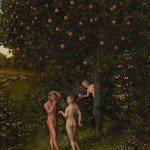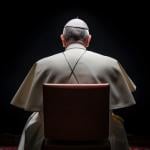
There is something about season three of Downton Abbey that I really liked.
Something dark.
I preferred it to season two: I found the war, albeit historically important and a perfect ending to season one, rather distracting and flimsily tethered together. Although I did cry for the sentimental ending.
I still think season one was almost perfect.
I didn’t cry when I intuited that Matthew was going to die nor when the thick fake blood massaged his ear and face and confirmed his demise.
I suspected the death immediately: as soon as the mood changed and the shot of him driving began, after the scene where he sees his heir and Mary, I knew something had to happen and the birth of an heir didn’t seem sufficient. There was something in the air; Matthew was going to die. I was shocked and almost amused—impressed, even.
I respect the move to darken the story, to lure us into the morbid juxtaposition of new love and infants and a rising death toll on a modernizing journey through the early 20th century.
There is a sense of finality to season three that two overstated and one mastered. There is also a dramatic shift away from romance and comedy and some suspense into tragedy. Season four, I expect, will be marked by grief, a grief that will not wear quite as gracefully as the deaths we’ve seen so far—including the passing of my favorite of the three sisters, Lady Sybil.
We all must realize that the Dowager Countess of Grantham—the irreplaceable Maggie Smith—cannot live forever.
I hope I’m wrong.
There is a late King Lear uncertainty coming on though, asking, “Is everyone is going to die?”
There is something almost Job-like about it all. Is there, really? Perhaps not. That might be going too far.
I do think, however, that the prim and proper world of the upstairs will only continue to be humanized in the most human things that exist in fiction and non-fiction: love and suffering.
In a certain way, the downstairs feels slightly more artificial now. More petty, to be sure. They have always been more formal and legalistic, too. I should know, I suppose, from experience: the less power you have, the more you are drawn to cling to rules and decorum.
Miguel de Unamuno, in The Tragic Sense of Life, places love and suffering together as the only things that personalize us. The art of living is a melancholy dance between love and suffering. This dance, for Unamuno, is deeply Christian. It represents what he calls la agonia del Cristianismo, the agony of Christianity.
Although much has been made about the anti-Catholicism in this season, I find it to be the most Catholic of the three. Even though I preferred the first, the third more closely grasps at something like a Catholic aesthetic. There is something sacrificial and almost sacramental about this season.
I see the death of Matthew Crawley as an admirable, albeit somewhat heavy-handed, finishing touch on a season that can be described in two words and a bit of irony: Catholic morbidity.
Perhaps there is just one word for it; a simpler, but better word. Religious?
I think so. This season had many demerits, but, on the whole, it felt like the most religious one thus far.















